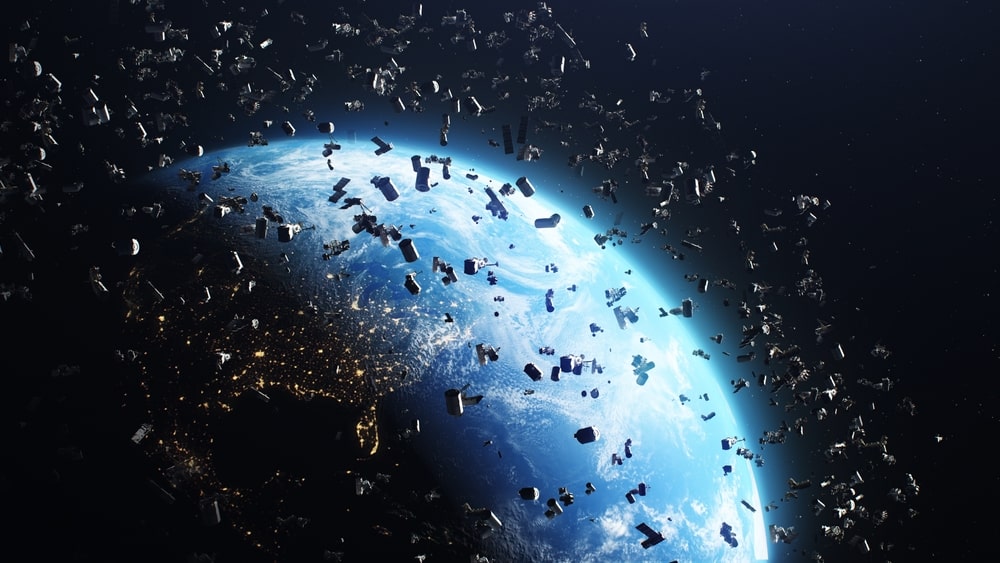
Insurers are concerned about the increasing likelihood of a collision between Low Orbit (LEO) satellites and space debris above earth.
NASA has identified around 23,000 pieces of debris in space that have the potential to damage a spacecraft or satellite. These pieces of debris are the size of a tennis ball or larger.
There is a whole host of debris that is currently not tracked but is orbiting the planet.
The European Space Agency estimates there are 36500 space objects greater than 10cm. 1,000,000 space debris objects that are between 1cm to 10cm and 130 million space debris objects between 1mm to 1cm.
At the same time, as space debris is on the rise, there is a boom in LEO satellites which are flying at 500km to 1,500km above the earth’s orbit. These satellites are constantly in motion, unlike GEO satellites which are stationary.
This closer proximity to the earth creates minimal lag, generating real-time responsivity, helping to deliver real-time voice communications, data tracking and transmissions according to SkyTrac.
LEO satellites operate in constellations, with a group of satellites working together as a system. Each satellite communicates and shares data with the other satellites in the system. So, if one satellite goes down, the other satellites in network can compensate for the offline satellite.
However, these LEO satellites are orbiting in the range of space debris and have a greater chance of collision with the debris, than GEO satellites which orbit at a higher level at 36,000km.
This could give rise to the so-called Kessler Syndrome (also known as Kessler Effect), coined by NASA scientist Donald J Kessler in 1978, which is something many experts are worried about.
Kessler outlined a scenario in which the density of objects at the low Earth orbit becomes high enough that collisions between these objects cause a cascade in which each collision generates space debris that increases the chance of further collisions.
It is this issue that concerns many space insurers. Typically, insuring a GEO satellite is regarded as “prime real estate” for insurance, as it comprises higher value missions and much less chance of collision with space debris, according to New Statesmen.
Despite LEO satellites having a greater risk of collision, many of the companies involved in the LEO missions are simply shouldering the risks themselves. A major reason is because the lifetime of a LEO is far less than a GEO satellite creating a built-in redundancy argues Space News.
“If you have a spacecraft that fails, you don’t need to file an insurance claim because next month you’re going to launch another 50 spacecrafts and you’re just going to replace that”, said Richard Parker of Canopius speaking to The New Statesmen.
The New Statesmen reports that Space X has deployed 3,000 satellites and plan to scale up to 12,000 in space, with a view to increasing to 42,000. All these Satellites have a lifespan of five years.
Only 63 of the 6,100 satellites currently in LEO are insured and at a total cost of $3.1 billion according to AXA XL as quoted in Space News.
In contrast, only 238 satellites out of all the 590 GEO satellites and 280 Medium Earth satellites, are insured, at a cost of $24.7bn.
Furthermore, AXA XL data revealed that only 38% of the 186 launches that attempted to reach orbit in 2022 were insured. These launches carried in total 2,500 satellites. Excluding the 70% of satellites that were Space X, which does not insure their satellites, only 340 were insured.
Typically, Space insurance covers “all perils” because it is difficult to understand the precise reason why a satellite stops working, as it could be a collision, a malfunction or a design flaw.
This works in practice for GEO satellites but when applied to LEO missions and satellites it becomes a bit trickier. What many insurers may have to do, according to New Statesmen, is examine the business models of the companies involved in the mission.
For hardly any of the companies developing LEO missions make it into space, and a further fraction of this turn in an actual profit.
Also, the cover itself of a LEO mission is very complex as the spacecraft involved in the mission may be smaller than the ones carrying GEO satellites and may carry several satellites for different operators, thereby increasing the potential exposure for a space insurer covering the risk.
At the moment, one industry source speaking to Space News said that there is a “healthy over supply” of insurers looking to cover risks.
However, what will determine the future of this market will be the law of supply and demand, and a rise in more collisions involving debris may make insurers question whether they wish to remain or even enter the space class at all.

Related Articles
Aviation
Aviation
Aviation